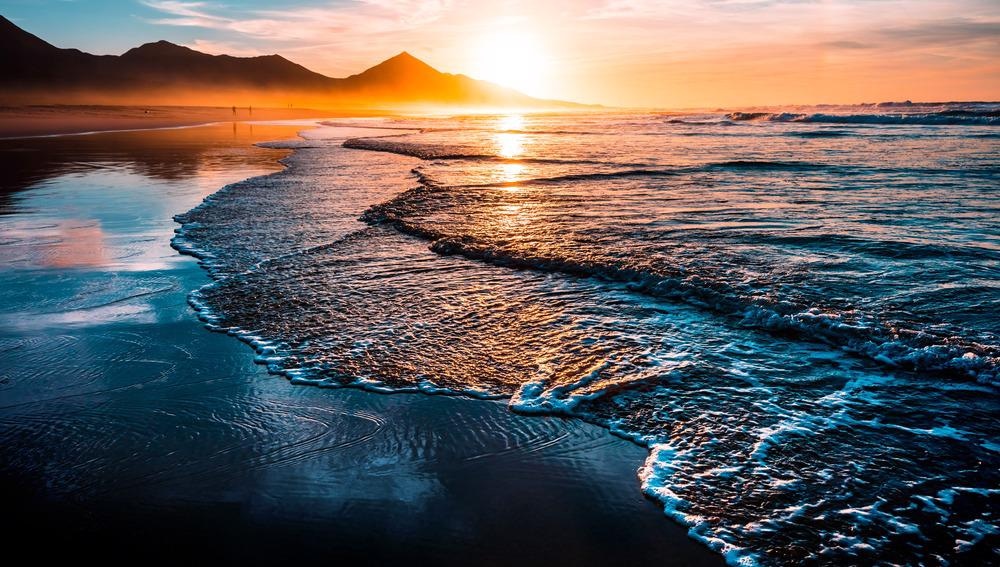The world’s oceans are intrinsically linked with climate change. They play a vital role in reducing the impact of rising carbon emissions by absorbing large amounts of the pollutant. However, this changes the chemistry of the seawater, initiating a chain of events that damage aquatic ecosystems, making it harder for certain species to live and affecting the overall biodiversity and productivity of ecosystems in the ocean.

Image Credit: Don Pablo/Shutterstock.com
The detrimental impact of carbon emissions on the ocean is recorded in marine microfossils, revealing ancient climate data to help scientists gain a deeper understanding of how ecosystems are being affected.
The World’s Oceans Reflect Climate Change
The world’s climate system is regulated and stabilized by the oceans which occupy roughly 70% of the planet’s surface and account for 95% of its habitable environment.
It is important to understand the world’s oceans to simultaneously grow our understanding of climate change.
With knowledge, we have a greater chance of innovating effective strategies to induce sustainable change with the result of drastically reducing carbon emissions. Such strategies are vital to the success of meeting Paris Agreement goals to limit global warming to a maximum of 2 °C, ideally 1.5 °C.
The continued rise in atmospheric CO2, which has been observed since records began, is changing our planet drastically, particularly our oceans.
While rising sea levels and water temperatures are often associated with climate change, the impact of increasing CO2 has far more implications than are generally considered.
Atmospheric CO2 alters the physical, chemical, and biological properties of the ocean. Not only does it cause water temperatures to rise, but it also changes the water’s pH, oxygen and nutrient availability, and stratification.
These changes to the ocean’s properties impact the species that can thrive in its waters. This means that the ocean ecosystem reflects the climate. After plants and animals die, their remains frequently sink to the ocean floor, with ones that died first falling before those that died more recently, landing on top of one another while capturing a timeline.
Therefore, ocean fossils offer scientists a window to view climates of bygone eras.
Studies have shown that fossils in a vertical column of the ocean floor can be used to gauge the temperature of the water during different periods. Overall, studies have identified foraminifera, the fossils of microscopic plants and animals, to be the most abundant and most useful sources to obtain information from.
Research has revealed that species of foraminifera as well as the chemistry of the scales can be used to calculate the approximate temperature range of the water for a given period. Along with the dating of the microfossils, scientists can attribute fairly accurate dates to the layers of sediment where the fossils were found, allowing them to develop a timeline of the ocean and its different climates.
The Use of a Microscope Camera in Marine Microfossil Analysis
Scientists in Germany, working at the Alfred Wegener Institute, Helmholtz Centre for Polar and Marine Research (AWI), are just one of many teams that are currently investigating marine microfossils for climate research.
Central to their research are microscope cameras which allow the team to identify the species existent in different layers of sediment on the ocean floor.
Several types of microscopes are used at the AWI laboratories. Currently, the JENOPTIK GRYPHAX® NAOS microscope camera is the team’s most used microscope camera.
The equipment is attached to the microscope to enable it to visualize the different features of the microorganisms sandwiched within the sediment, such as the siliceous, calcareous, and organic-walled hard parts.
The JENOPTIK GRYPHAX® NAOS is currently the focus of the team’s research due to its high image quality, ease of use, and cost-effectiveness.
The procedure involved in ascertaining information about the climate from microorganisms begins with collecting water samples, modern seafloor sediments, and ancient seafloor sediments from polar oceans, all of which are laden with microorganisms.
To investigate the microfossils, they are filtered from seawater and removed from their surrounding sediments. Then, they are mounted onto optical slides and embedded via adhesive.
The microscope camera is then used to visualize the sample, so species or species assemblages can be analyzed, counted, and documented.
The most analyzed species of microfossil is the Fragilariopsis kerguelensis species. The Thalassiosira lentiginosa species is also abundant. Scientists then archive images of the microfossils and produce photo plates to be published in scientific journals.
Analyses reveal the climate conditions that occurred at the time the sample was alive, this information, along with the date of the sample is allowing scientists to piece together the history of climate conditions of the ocean.
The ocean floor’s fossil record acts as an archive of climate change over the centuries. This information is giving a more detailed picture of current climate change, as well as helping us to understand how it impacts oceans.
References and Further Reading
Climate Change Indicators: Oceans. [Online]. EPA. Available at: https://www.epa.gov/climate-indicators/oceans (Accessed 18 October 2021)
Microfossils. [Online]. Earth Observatory. Available at: https://earthobservatory.nasa.gov/images/5884/microfossils (Accessed 18 October 2021)
Schmidt, D. (2017) Determining climate change impacts on ecosystems: the role of palaeontology. Palaeontology, 61(1), pp.1-12. https://onlinelibrary.wiley.com/doi/10.1111/pala.12335
Stefan Seidlein. (2020) How a microscope camera reveals secrets of marine microfossils for climate research. [Online]. Jenoptik. Available at: https://focus.jenoptik.com/en-gb/blog/2020/04/08/microscopy-cameras-in-marine-biology (Accessed 18 October 2021)
Disclaimer: The views expressed here are those of the author expressed in their private capacity and do not necessarily represent the views of AZoM.com Limited T/A AZoNetwork the owner and operator of this website. This disclaimer forms part of the Terms and conditions of use of this website.